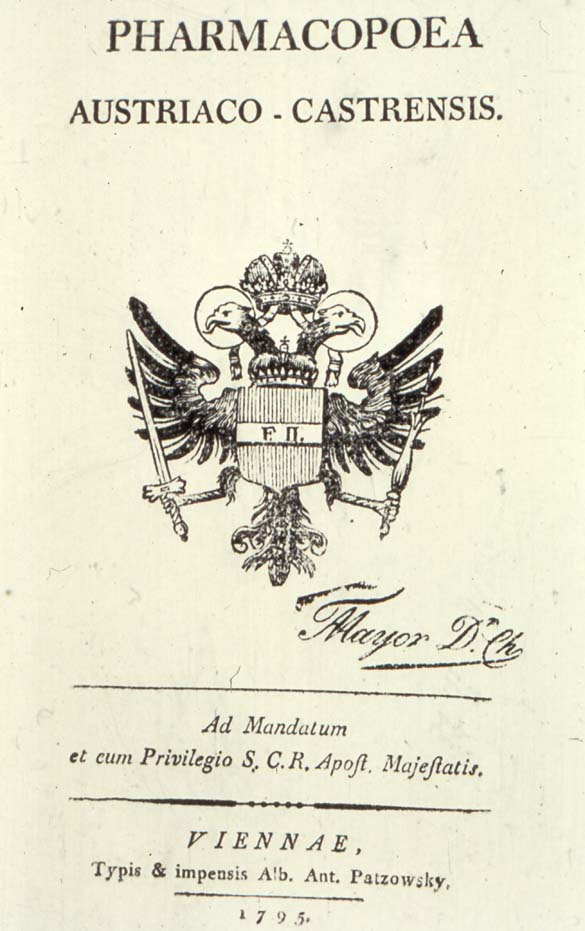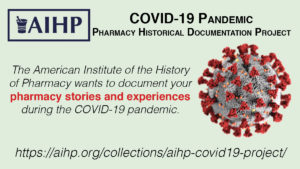Author: Alex Berman
Publisher: American Institute of the History of Pharmacy
Year Published: 1980, 2010
Slides: 21
AIHP#: ST65
Price: $20.00 ($12.00 for members)
Summary: The character of earlier-day formularies, international in scope, discussing both the significant and the curious.
Abstract: Manuscript hospital formularies which had existed in medieval and early modern hospitals were already commonplace when printed hospital formularies began to appear in western Europe. We cannot say with assurance when or where the first printed hospital formulary was published, but the oldest one extant is a work by the Italian physician, Pisani, printed in 1642 for the hospital in Messina, Sicily. A copy of this formulary is in the Bibliothéque Nationale of Paris. There is an interesting diversity in 18th and 19th century formularies with respect to size, content, and scope. While it is true that the majority of formularies belonging to this period are pocket-size or smaller, there are many exceptions. Actually, the range of sizes may vary from the broadside (49 cm. wide and 1.4 cm. high) published in 1704, and used by the French for their military hospitals in Italy, to the 820-page tome compiled by Sir James Wylie for the Russians in l840. In content, works may run the gamut from a basic drug list, to a large compendium in which both pharmacological treatise and dispensatory are merged. Frequently, one finds also the diets for patients in the English works, the hospital data given in the formularies of Robert Poole and F. S. Ratier, or the tables of supply found in military and naval formularies This diversity extends further to types of formularies – those compiled for individual hospitals, both general and special – for hospitals of a city, an entire country, for military and naval formularies. There are even examples of hospital formularies which are universal and multi-national in scope. A study of the development of the printed hospital formulary is valuable not only to the historian, but also to the practicing hospital pharmacist. In the course of its evolution, the printed hospital formulary has mirrored more than three centuries of therapeutics in the hospital and has often reflected social and political change. For those who are concerned with the growth of the hospital, the formulary can offer fresh insights and source material. It is also interesting to note the interaction of official pharmacopoeias and formularies. While the latter have borrowed heavily from the official compendia, there have been instances where hospital formularies have been of value to compilers of pharmacopoeias. The decentralized formulary of the 18th and 19th century flourished best in the wake of the voluntary hospital movement in England, and in the similar tradition which followed in the United States. On the other hand, the numerous centralized formularies such as those of Paris after the Revolution, and of course all current military and naval formularies, were issued under governmental authority. The drive for unity, synthesis and universality which has been so strong in the history of pharmacopoeias, is certainly not lacking in the development of hospital formularies as exemplified in the works of Poole, Squire, Ratier, and others; and paralleling the universal pharmacopoeias of Lemery, Jourdan, and Geiger are the universal or multinational hospital formularies of Northcote, Foy, Milne-Edwards and Vavasseur.



 The American Institute of the History of Pharmacy is documenting and preserving pharmacy stories and experiences during the COVID-19 global pandemic for the benefit of future historians and scholars. We seek to record the effects of this public health emergency on all types of pharmacy experiences. We invite you to share your pharmacy stories, photos, videos, artifacts, and other documentation of the COVID-19 coronavirus pandemic.
The American Institute of the History of Pharmacy is documenting and preserving pharmacy stories and experiences during the COVID-19 global pandemic for the benefit of future historians and scholars. We seek to record the effects of this public health emergency on all types of pharmacy experiences. We invite you to share your pharmacy stories, photos, videos, artifacts, and other documentation of the COVID-19 coronavirus pandemic.